Carbon fibre strengthening (CFRP)
Service
Services
Contact For Services
Total Specialist Maintenance Ltd (TSM) is a leading specialist contractor Driven to exceed expectation!
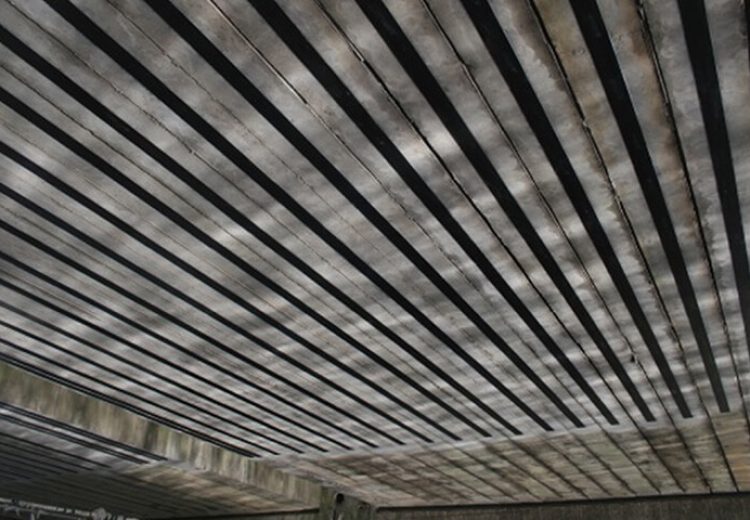
Carbon fibre strengthening (CFRP)
Total specialist maintenance provide specialist Carbon fibre strengthening services to bridges, subways, buildings, tanks, silos and car parks structures on a national basis and for various market sectors
Total specialist maintenance carries out all forms of carbon fibre reinforcement which include carbon fibre plate bonding, carbon fibre wrap, Carbon rod reinforcement replacement. Total specialist maintenance is an approved installer of all of the major Carbon fibre material manufacturers’ product ranges, As an approved contractor for all of the leading material suppliers we select the most appropriate materials and procedures to provide a cost-effective engineered composite solution
Total Specialist maintenance offers a comprehensive structural strengthening design and installation service using the latest technologies to strengthen concrete, steel and cast iron structures.
Requirements for Carbon fibre strengthening
Carbon fibre plate, carbon fibre wrap and carbon fibre rod reinforcement replacement installations are used to increase the load-bearing capacity of beams, columns, concrete floor slabs, concrete walls, tanks and silos to increase the hoop and shear strength where the failure of the existing reinforcement is being experienced or a there is a requirement to increase the load capacity of the structure/building.
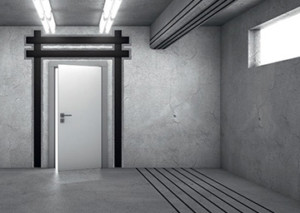
Carbon fibre plate bonding technology is often used during new construction where cut-outs within reinforced concrete construction for doorways, machinery installation and other obstructions reduce the overall structural performance of the reinforced concrete elements and offer significant cost savings compared to traditional structural strengthening due to the ease in application
Services Provided
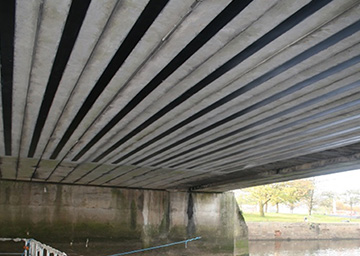
Carbon fibre plate bonding
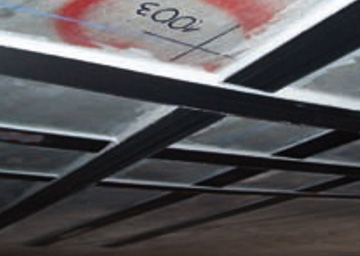
Carbon fibre wrap
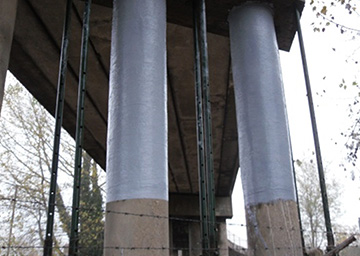
Carbon fibre rod replacement
Sectors
- Aviation Industry, Bridges and Tunnels, Buildings, Education, Food And Drink Industry, Highways, Hotel and Leisure, Local Authorities, Marine Structural Refurbishment, Ministry of Defence, Multi-storey Car Park, Nuclear, Petrochemical Industry, Pharmaceutical Industry, Rail, Social Housing, Water Industry
Benefits
Directly Employed Workforce
Highly Skilled and Experienced Operatives
Certified Training
Accreditations




Frequently
Ask Questions
Technical Questions about
Carbon fibre strengthening
Frequently asked questions about Total Specialist Maintenance Carbon fibre strengthening, for domestic, highways, rail and infrastructure sectors and technical queries regarding Carbon fibre strengthening
For any additional information that is not listed please contact our technical team
CFRP composites, otherwise known as Carbon fibre-reinforced polymer, is a strong composite material made from polymer – and as the name suggests, it’s reinforced with fibres.
In our case, we use CFRP composites that are made from polymer then strengthened and stiffened using carbon-fibre, so we add a `C` to the acronym to call it CFRP.
CFRPs are used in several industries including our own – the construction industry! And when you look at the pros, it’s easy to see why our specialist construction workers reach for it time and time again.
Carbon Fibre-reinforced polymer has many uses in construction, including the concrete strengthening and repair of roofing, floors, walls, and other foundation of a building. More impressively, it’s also used to complete strengthening jobs on large structures like bridges.
The CFRP composites material has an extensive list of benefits, including:
- Anti-corrosive
- Durable
- Easy to install
- High-strength
- Lightweight
- Low-maintenance
- Waterproof
Interestingly, the polymer element protects the fibres from harsh elements such as chemicals, water, extreme heat, and extreme cold.
CFRP composites material is used to complete a wide variety of construction jobs. At Total specialist maintenance we use it throughout:
- Structural Strengthening Jobs
- Concrete Repair Jobs
- Bridge load bearing enhancement
- Beam strengthening
- Column strengthening
- Concrete cut outs
CFRP composites are strong and stiffer per unit, lightweight (1/5th the weight of steel with comparable strength), and extremely resistant. Together with fast installation time CFRP solutions are often preferable to traditional structural steel/ concrete enhancement and are less intrusive
Due to the increased strength and high anti-corrosive properties, carbon fibre reinforced polymer (CFRP) are used to reinforce all kinds of structural elements in varying conditions. This includes buildings, bridges, sewage works, and more.
Carbon fibre-reinforced polymer advantages
- It is light weight which means fewer resources workers are needed to deliver and complete the project = a cost-effective option.
- It has high fatigue resistance and the flexible carbon fibres crack far less frequently than traditional alternatives like concrete and steel (especially when they’re subject to repeat load-bearing weight).
- Carbon fibre-reinforced polymer has a higher `compression` strength than materials like aluminium and steel. This means that carbon fibre handles more pressure than its traditional alternatives.
- It survives the majority of severe environmental conditions like humidity, rainfall, radiation, chemical exposure, and more. It doesn’t corrode or deteriorate, so any mechanics coated in carbon fibre will work continue to work efficiently.
Carbon fibre-reinforced polymer disadvantages
- Carbon fibre products are expensive compared to other structural building materials used for the same jobs. Though, while products like aluminium and steel are cheaper initially, they require more manpower due to the weight.
